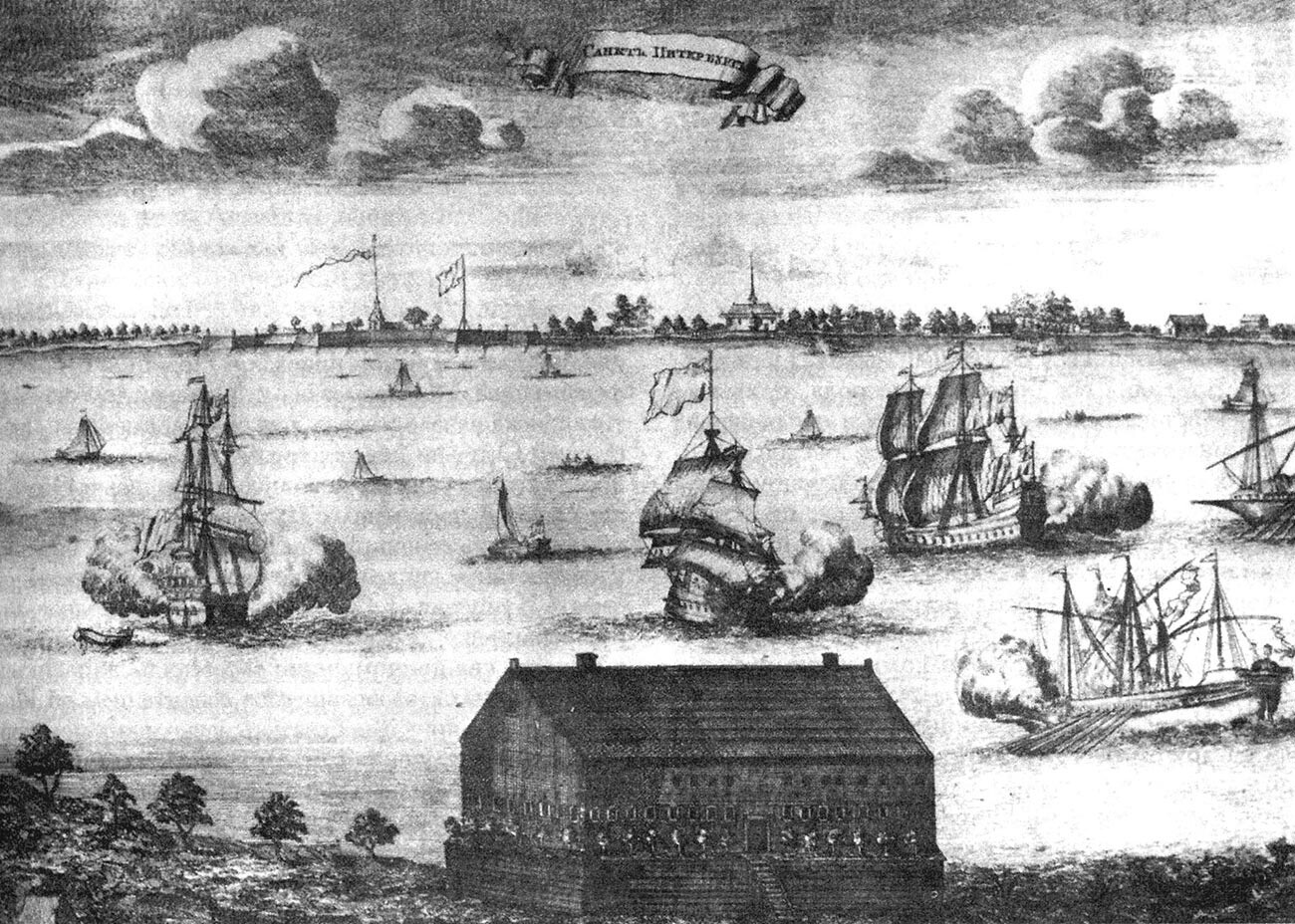Why did Peter I ban stone houses in Russia?

“Stone buildings are being built very slowly here [in Saint Petersburg], due to the fact that it is difficult to find masons and other artists of this kind even for decent pay,” Peter the Great wrote in a 1714 decree. “Therefore, any stone construction is prohibited throughout the whole state for several years, to everyone, without distinction of name, under threat of confiscation of the estate and exile.” By “stone buildings,” Peter meant brick structures.
Ten years after Saint Petersburg was founded, there was still a shortage of stone masons on the construction site that was the city at the time. Peter reckoned that if he banned stone construction, stone masons from all over the country would travel to Saint Petersburg to find work, and that is what happened. However, it wasn’t the only measure Peter the Great took to make Saint Petersburg more of a stone city than a wooden one.
Fatal building work

"Peter I at the Construction of Saint Petersburg", by Georgy Pesis.
Georgy PesisSaint Petersburg was also a reputational project for the Russian state. Creating a modern European city from scratch, on the swampy grounds of the mouth of the river Neva, was an ambitious enterprise all of Europe viewed with awe – and there were numerous deaths during its construction.
French envoy Jacques de Campredon reported in 1723 that over 150,000 perished during the building of Saint Petersburg. Francis Dashwood, the first British tourist in Russia, in 1733 put the number at more than double that, with workers dying from starvation and disease. However, the truth is far from these accounts.

St. Petersburg in 1704 by P. Picard
Public domainFrom 1703-1704, there were two main kinds of builders in Saint Petersburg. The majority of unqualified workers – builders, loaders, diggers – were peasants, serfs that belonged to the state. Every year a certain number were sent on the tsar’s orders to Saint Petersburg. Russian historian Ekaterina Andreeva shows that between 1703-1712, about 190,000 unqualified peasants were sent to Saint Petersburg. The peasants received wages, had access to healthcare, and didn’t stay in the city for long – their shifts lasted for three months, after which they were allowed to go home.

The types of houses in early St. Petersburg
Public domainThe other kind of workers were qualified quarrymen, stonemasons, blacksmiths and carpenters, who were invited to Saint Petersburg. Andreeva studied archive data from 1704 to 1711, which states that between 13-14,000 qualified workers were actually sent to Saint Petersburg. They, too, received wages, though higher than the peasants.
It is also proven by historians that Saint Petersburg laborer death rates were no higher than average for the general population across the country at the time (around 10 percent). Hundreds of thousands of workers simply couldn’t have perished during the city’s construction – it would have meant that almost all of the workers sent there perished.
However, the construction sites really lacked workers: “The greatest need is for the blacksmiths, because without them, some construction sites are completely still and silent, and carpenters are in demand, too,” a Saint Petersburg official wrote in 1705.
READ MORE: Debunking 5 myths about how Saint Petersburg was built
Lack of bricks

The beginning of St. Petersburg's construction
Alexander BlinkovThe main drawback for stone construction was lack of bricks. During the first years of construction, brick mills quickly used all the timber around Saint Petersburg, and by the 1710s, they had to supply firewood from other regions, which hindered production.
Russian historian Sergey Luppov calculated that in the 1710s, Saint Petersburg brick mills produced 15 million bricks annually on average), which was enough to build only around 30 government brick buildings. However, most of the bricks were used to construct the Peter and Paul fortress,and the early Winter palace. Most houses were still wooden. Sometimes, to save bricks, new brick houses were built with a common wall.

The plan of St. Petersburg, 1705
Public domainIn 1709, Peter ordered “ministers, generals, and noblemen” to build brick houses in Saint Petersburg. Apparently, there were too few of them, and in 1713, another decree was issued, which obliged all court officials to live in Saint Petersburg in their own brick houses.
Finally, in 1714, the ban on brick buildings all over Russia was put in effect. However, it didn’t change much. In 1716-1717, the houses of Peter's entourage, which stood on the Petrovskaya Embankment, were still wooden, except for the stone house of chancellor Gavriil Golovkin. Other courtiers were still “preparing” to build brick houses. The Summer and Winter palaces were built in brick, and several stone houses belonging to nobles and members of the royal family situated behind the Fontanka river.

Boats on the Neva River in front of the Peter and Paul Fortress
Getty ImagesOrdinary people were forced to build their houses on Vasilyevsky island, at a distance from the Winter palace and the city center. However, in 1726, less than half of the lots on the island were occupied. The ban on brick buildings in Russia was lifted in 1741. Saint Petersburg remained a largely wooden city. In 1798, statistics say, of 6,072 houses in Saint Petersburg only 1,834 were stone, and in 1833 of 7,976 houses, 2,730 were stone. Not all of Peter’s wishes easily came true.
If using any of Russia Beyond's content, partly or in full, always provide an active hyperlink to the original material.
Subscribe
to our newsletter!
Get the week's best stories straight to your inbox